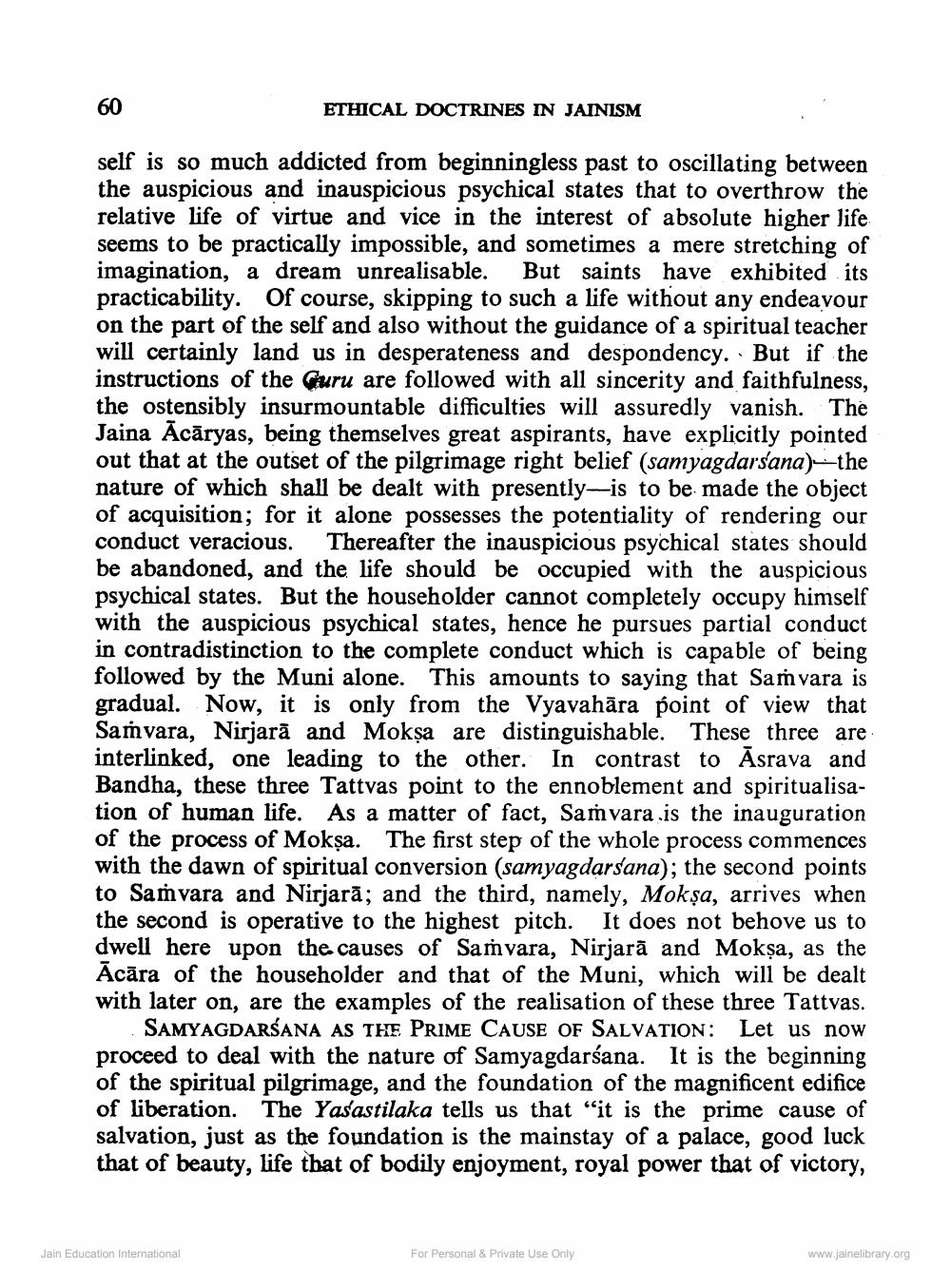________________
60
ETHICAL DOCTRINES IN JAINISM
self is so much addicted from beginningless past to oscillating between the auspicious and inauspicious psychical states that to overthrow the relative life of virtue and vice in the interest of absolute higher life seems to be practically impossible, and sometimes a mere stretching of imagination, a dream unrealisable. But saints have exhibited its practicability. Of course, skipping to such a life without any endeavour on the part of the self and also without the guidance of a spiritual teacher will certainly land us in desperateness and despondency. But if the instructions of the Guru are followed with all sincerity and faithfulness, the ostensibly insurmountable difficulties will assuredly vanish. The Jaina Acāryas, being themselves great aspirants, have explicitly pointed out that at the outset of the pilgrimage right belief (samyagdarsana)-the nature of which shall be dealt with presently-is to be made the object of acquisition; for it alone possesses the potentiality of rendering our conduct veracious. Thereafter the inauspicious psychical states should be abandoned, and the life should be occupied with the auspicious psychical states. But the householder cannot completely occupy himself with the auspicious psychical states, hence he pursues partial conduct in contradistinction to the complete conduct which is capable of being followed by the Muni alone. This amounts to saying that Samvara is gradual. Now, it is only from the Vyavahāra point of view that Samvara, Nirjara and Mokṣa are distinguishable. These three are interlinked, one leading to the other. In contrast to Asrava and Bandha, these three Tattvas point to the ennoblement and spiritualisation of human life. As a matter of fact, Samvara is the inauguration of the process of Mokṣa. The first step of the whole process commences with the dawn of spiritual conversion (samyagdarsana); the second points to Samvara and Nirjara; and the third, namely, Mokşa, arrives when the second is operative to the highest pitch. It does not behove us to dwell here upon the causes of Samvara, Nirjara and Mokṣa, as the Acara of the householder and that of the Muni, which will be dealt with later on, are the examples of the realisation of these three Tattvas. SAMYAGDARSANA AS THE PRIME CAUSE OF SALVATION: Let us now proceed to deal with the nature of Samyagdarśana. It is the beginning of the spiritual pilgrimage, and the foundation of the magnificent edifice of liberation. The Yasastilaka tells us that "it is the prime cause of salvation, just as the foundation is the mainstay of a palace, good luck that of beauty, life that of bodily enjoyment, royal power that of victory,
Jain Education International
For Personal & Private Use Only
.
www.jainelibrary.org




